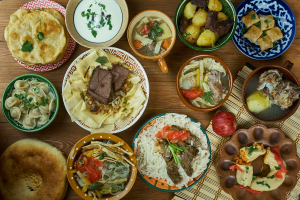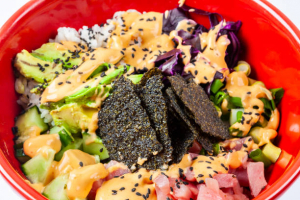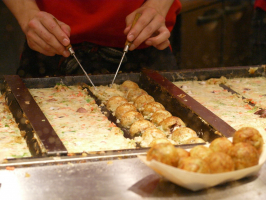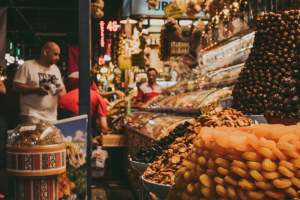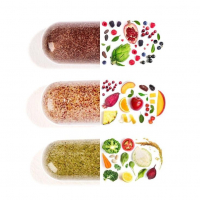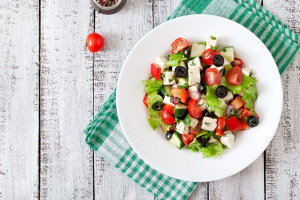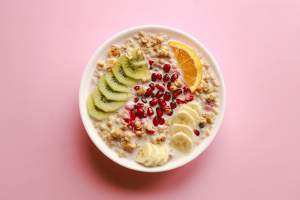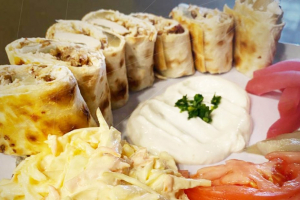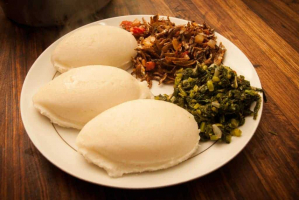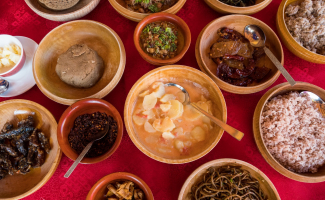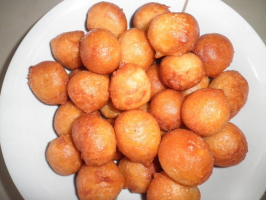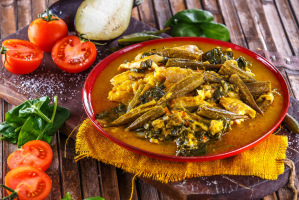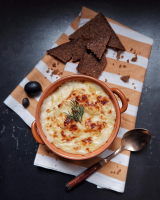Top 10 Best Israeli Foods
When it comes to Israeli food, because Israel is a young state, with the majority of its population being second- or third-generation immigrants to the region, ... read more...its food culture is a bit of a melting pot. When you walk through the bustling markets of Jerusalem or Tel-Aviv, you'll notice that there's plenty to see, do, and taste, with vendors calling out to the crowds, lines forming for falafel stands, and pretty much everyone tucking into something delicious. If you're planning a trip to Israel and want to get a taste of the local cuisine, Toplist hopes our list of the Top 10 greatest Israeli cuisines will point you in the right direction.
-
Challah is a leavened, braided egg bread that is traditionally consumed on Shabbat in Jewish communities, but it is also popular at festive occasions such as weddings and brit milahs. Less common challah shapes include spirals, books, keys, and flowers rather than braids.
Before baking, challah is sometimes sprinkled with poppy, sesame, or coriander seeds to represent the manna that fell from heaven during the Israelites' Exodus. Two loaves of challah are traditionally placed on the festive table on Shabbat, their braids representing connection, justice, love, and peace.
Challah is a special occasion bread that is typically served for Shabbat and other holidays. It is made with leavened egg dough and is usually shaped like a braid, but other shapes such as a round, a key, a ladder, a hand, a triangle, or an oblong are also traditional.
Challah can also be classified based on the ingredients that are used. Ashkenazi Jews' challah, considered the original version of the bread, will include eggs, oil, poppy or sesame seeds, honey, and raisins if made specifically for Rosh Hashanah. Because sugar and eggs were in short supply in North Africa and the Middle East, Sephardi Jews seasoned their challah with spices like anise, caraway, cardamom, coriander, and za'atar. The bread is also enriched with olive oil or nut oils, and orange blossom and rose water, as well as saffron and raisins, are frequently added. Mizrahi Jews, on the other hand, make a very plain challah with no fat and only a speck of sugar.
Challah is best paired with medium-dry white wines and dry red wines.
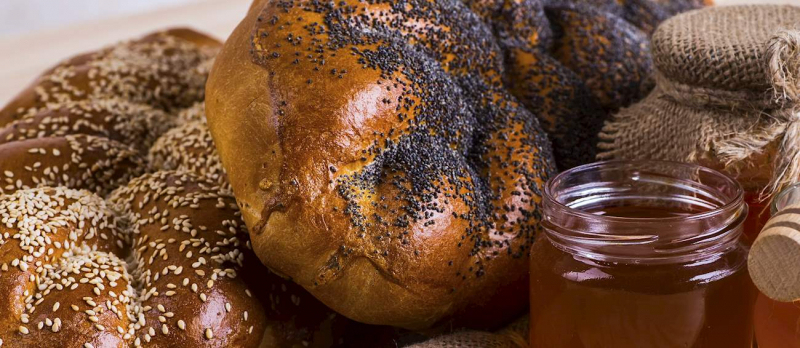
https://www.tasteatlas.com/ 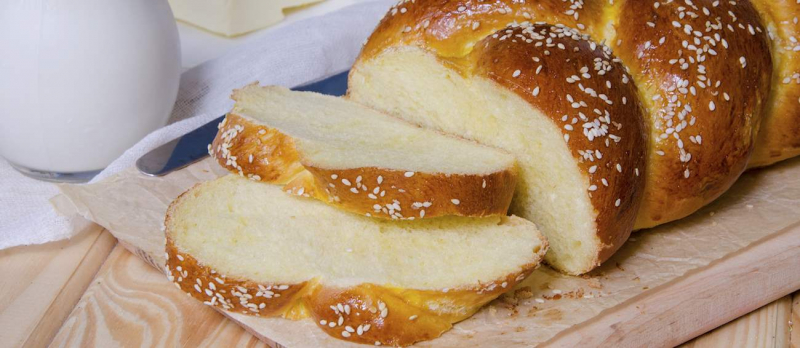
https://www.tasteatlas.com/ -
Shawarma is a delicious Middle Eastern meat treat that is marinated and spit-roasted. Its name comes from the Arabic pronunciation of the Turkish word çevirme (lit. to turn; turning) and refers to the rotating skewer on which the meat is cooked.
Shawarmas are made with lamb, turkey, chicken, beef, or a combination of different meats that are slow-cooked for hours and basted in their own juices and fat, gaining incomparable succulence, but the real secret to a perfect shawarma is in the marinade.
Depending on the variety, the meat should be marinated for at least a day, preferably two, especially if beef is used. These marinades are typically made with yogurt or vinegar and include spices and flavorings like cinnamon, cloves, cardamom, nutmeg, black pepper, allspice, dried lime, spicy paprika, garlic, ginger, lemon, bay leaf, and sometimes even orange slices.
Shawarma is typically served on its own or tucked inside a warm flatbread like pita or lavash. What truly distinguishes it from Turkish döner kebab, Greek gyros, and other similar foods is the variety of garnishes and condiments available.
Israeli shawarmas, for example, are typically topped with tahini and served with generous portions of hummus and pickled mango slices, whereas in other countries, shawarma is frequently accompanied by garlic mayo or a zesty toumaia garlic sauce, both fresh and pickled vegetables, salads such as tabbouleh or fattoush, and amba sauce–a tangy chili and mango pickle dip.
Shawarma, once a common staple of the Middle Eastern working man, has evolved into the ultimate Arabic street food, found not only in Arabia and the Levant, but in virtually every nook and cranny of the globe.
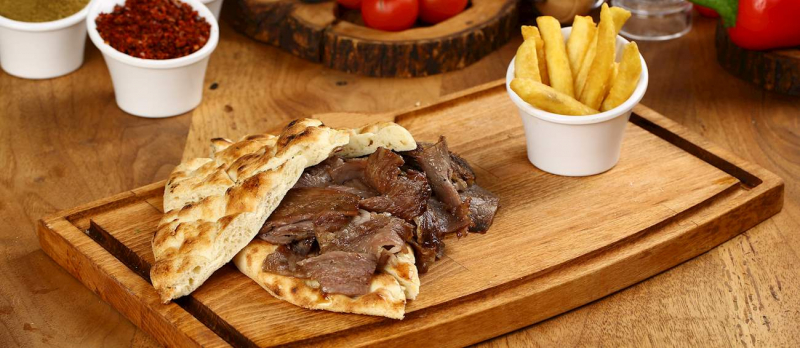
https://www.tasteatlas.com/ 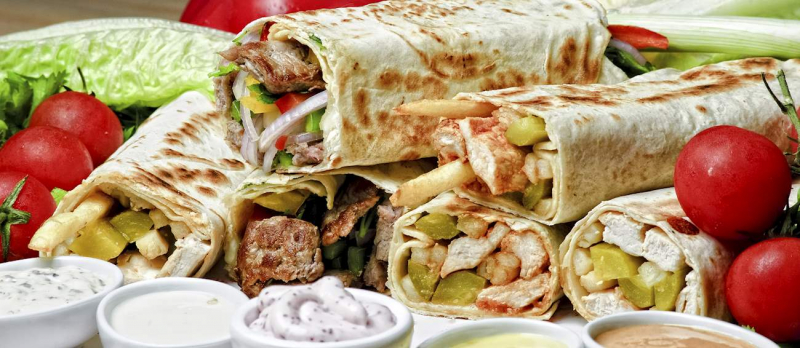
https://www.tasteatlas.com/ -
Kunāfah is made up of two crunchy layers of shredded and buttered kataifi or knefe dough, filled with a luscious cheese cream flavored with orange zest and cardamom, and drenched in a sugar syrup infused with lemon juice and orange blossom water.
Hatay, Urfa, or Antep cheese is traditionally used to make Turkish künefe. It is typically topped with pistachios and served warm. This dessert is elegant and incredibly simple to make, and it is everything a cheese-filled pastry dream is made of.
Some authors believe it originated in pre-Islamic Syria, while others believe it was born in the Palestinian city of Nablus, hence the name kanafeh nabulsieh. Nonetheless, this decadent dessert has a long culinary history in Turkey and Egypt, and it is listed as one of Egypt's national dishes.
If you plan a trip to Israel in the future, try this dish at least once. Your trip will not be complete without trying this dish. Many visitors are surprised by its unique taste and say that they had a good experience with it.
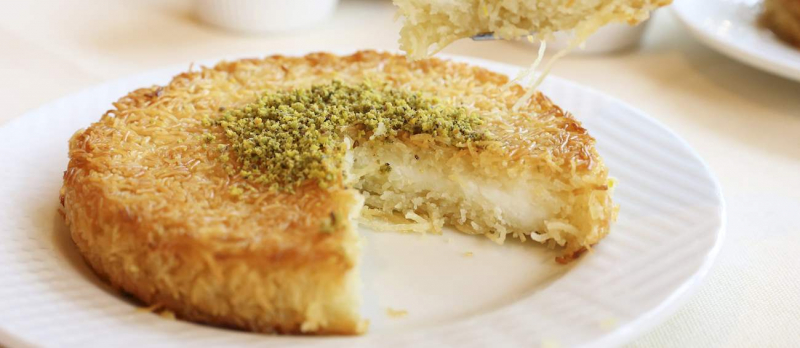
https://www.tasteatlas.com/ 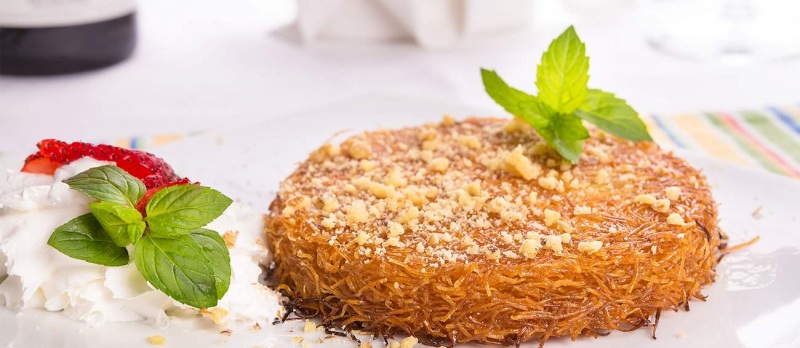
https://www.tasteatlas.com/ -
Za'atar is a traditional Middle Eastern and Levantine spice blend. The ingredients used in za'atar vary by region, but they commonly include the wild za'atar herb (hyssop, which grows throughout the Levant), marjoram, thyme, oregano, coriander, cumin, toasted sesame seeds, sumac, and salt.
Sumac adds a lemony, citrusy flavor, oregano adds a slight bitterness, and marjoram adds sweet notes. The spice blend is commonly used to season soups, dips, bread, meat, rice, pasta, vegetables, and rice dishes.
Try Za'atar at least once if you plan a trip to Israel in the future. Your trip will not be complete unless you try this dish. Many visitors are pleasantly surprised by its distinct flavor and report having a pleasant experience with it. They highly recommended this dish as one of the Israel must-try foods.
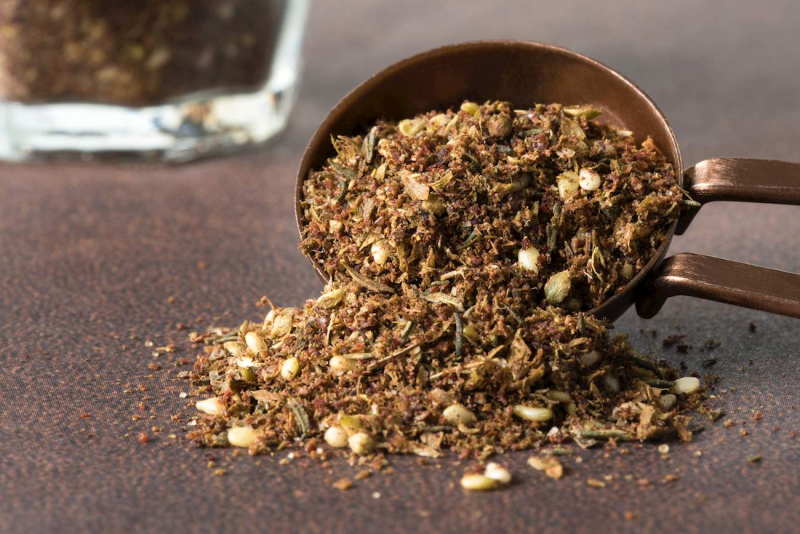
https://www.tasteatlas.com/ 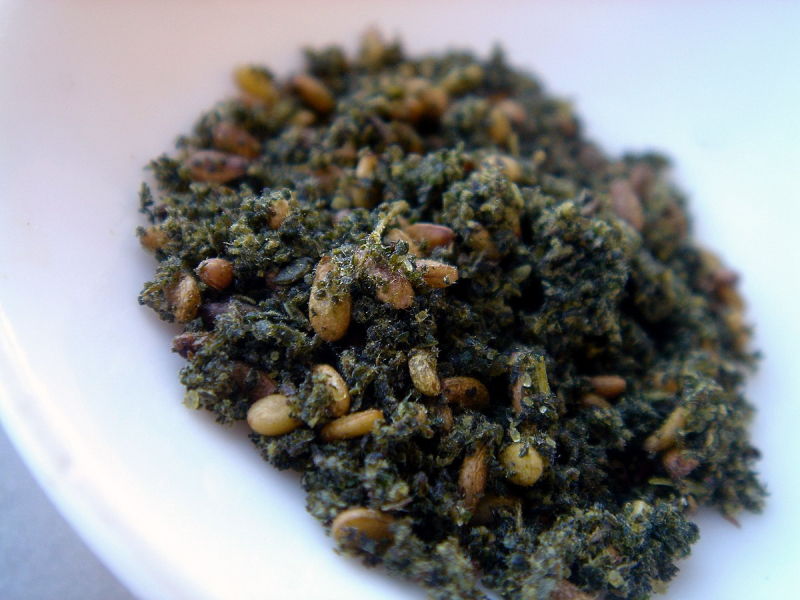
vi.wikipedia.org -
This beige-colored spread is made traditionally with mashed chickpeas, tahini sesame paste, lemon juice, and garlic. Hummus is popular all over the world because of its tangy flavor and nutritional value.
When served, it is usually drizzled with olive oil and used as a dip for vegetables or a flavorful filling for flatbreads like pita. Even today, little is known about its origins, though hummus was first mentioned in 13th-century Egypt.
Hummus is sometimes spiced with cumin and paprika, and it can be topped with anything from fresh herbs, cucumbers, and chopped tomatoes to olives, pine nuts, and hard-boiled eggs. This delicious dish is also served with Crudités, Içli köfte, Jachnun, Falafel, Taameya, Haminados, Pita Bread, Bagel Toast. If you intend to travel to Israel, this meal is one of the must-try dishes for you.
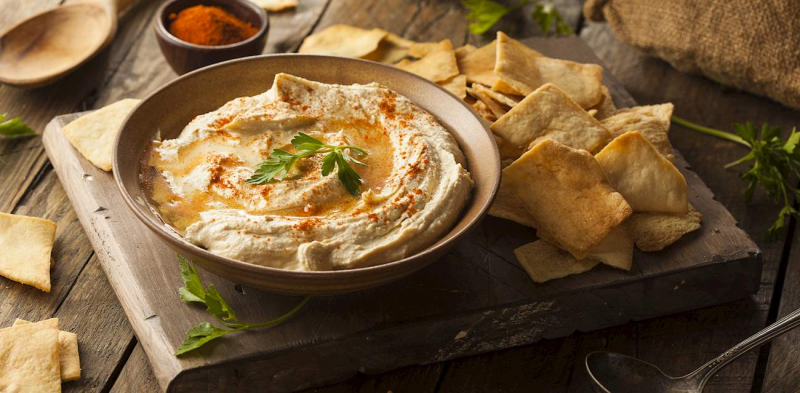
https://www.tasteatlas.com/ 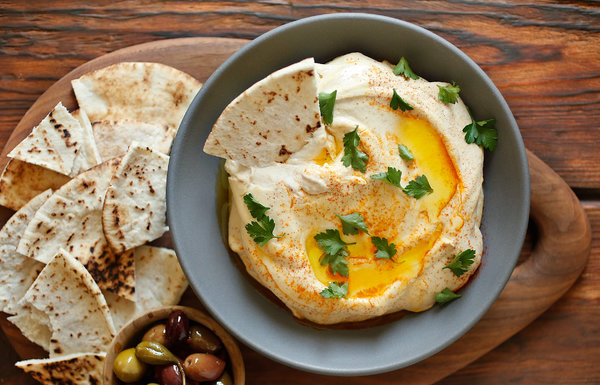
cooking.nytimes.com -
Rugelach, a Jewish pastry of Ashkenazi origin, is made by rolling a triangle of dough around a filling, resulting in crescent-shaped pastries. Alternatively, the dough can be rolled into a strudel or nut roll and then sliced before baking.
The dough can be made with sour cream or cream cheese, but the dairy ingredients are optional, and the fillings can range from nuts and raisins to fruit preserves. These delectable pastries are traditionally eaten during Hanukkah, but they are available all year in cafes and bakeries.
If you intend to go on a trip to Israel in the future, you should try this dish at least once. Your trip will not be complete unless you try this dish. Many visitors are pleasantly surprised by its distinct flavor and report having a pleasant experience with it. They highly recommended this dish as one of the must-try foods in Israel.

https://www.tasteatlas.com/ 
https://www.tasteatlas.com/ -
Cholent is a traditional Jewish stew that takes a long time to cook. Eastern European cholent is typically made with barley, beans, and meat, along with a variety of seasonings. Cholent is traditionally made on Friday, the day before the Jewish Sabbath, when all work is prohibited.
Due to the long cooking time, the flavors will have already infused, the beans will soften, and tougher cuts of meat will become juicy and tender. The dish originated in Israel and the Middle East before spreading to North Africa. It was already present in Spain by the 9th century.
Cholent is now found in countries all over the world, including the United States, Germany, the Netherlands, Morocco, and Hungary.
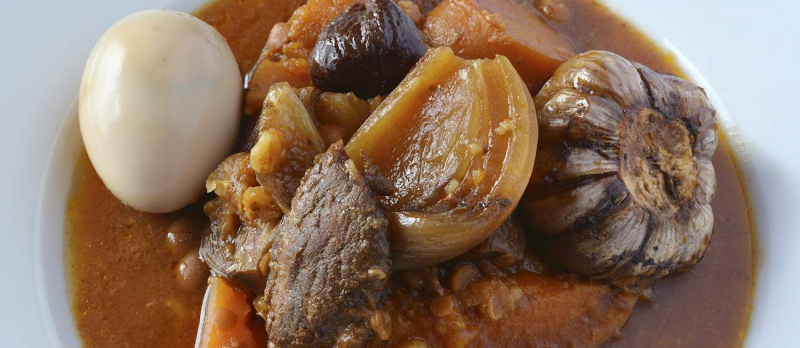
https://www.tasteatlas.com/ 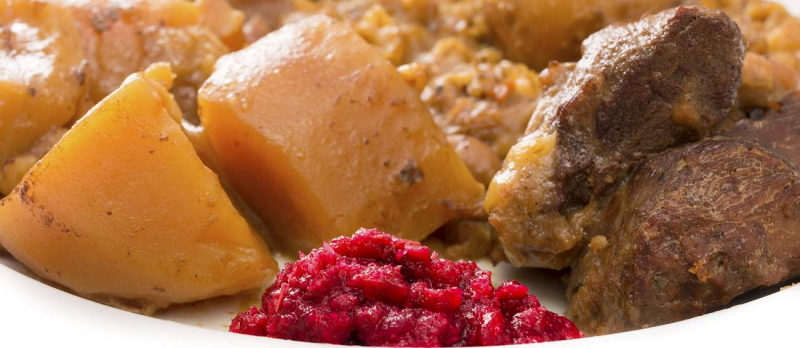
https://www.tasteatlas.com/ -
Shakshouka is a delectable combination of poached eggs in a spicy tomato sauce. Despite its unusual name, the dish is straightforward and simple to prepare. It is typically prepared in a skillet by cooking onions, tomatoes, and spices until they form a delicious tomato sauce.
The eggs are then poached in the tomato sauce until they are done. Merguez sausage can be added to the dish as well. Shakshouka is thought to have originated in Tunisia, but the dish is well-known and popular throughout North Africa and the Middle East.
Almost every region has developed its own version of shakshouka: in Egypt, eggs are typically scrambled and served in a sandwich, whereas in Israel, it is frequently served with salty feta cheese on top. The sauce and eggs' consistency are also variable; the sauce can be thinner or thicker, and the eggs can be completely firm or soft.
Meat, most commonly sausages, can be added to the dish for a more nutritious meal. Shakshouka can be served at any time of day and is typically served warm or sizzling hot with bread on the side. The dish has recently gained popularity in both Europe and North America due to its low cost, simplicity, and ease of preparation.
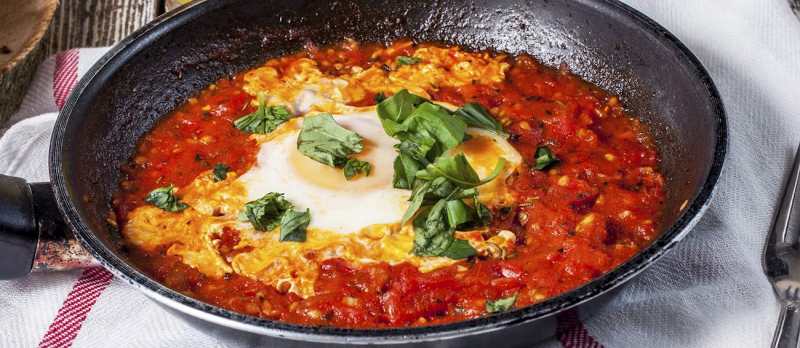
https://www.tasteatlas.com/ 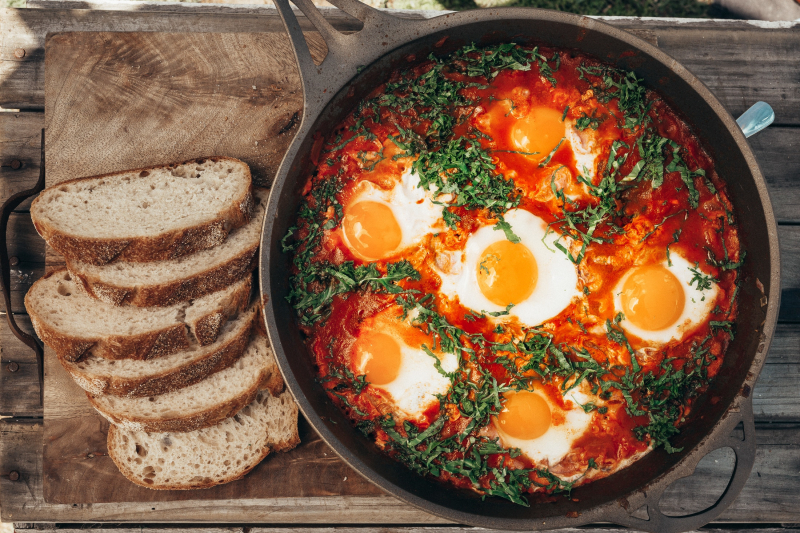
touchpointisrael.com -
Labneh is a traditional Middle Eastern strained yogurt made with yogurt and salt that has a creamy texture and mild flavor. It is made without any strict guidelines; plain full-fat yogurt is mixed with salt and left to strain for 12 to 24 hours.
The yogurt whey separates during the straining process, leaving a thick and firm cheese-like product. Its texture can range from creamy to dense, but its flavor is always mild and slightly salty. The name labneh is indigenous to the Middle East, but strained yogurt varieties can also be found in Greece, Turkey, Cyprus, Central Asia, the United States, Mexico, and the United Kingdom.
It is typically made with cow milk, but other types, such as goat yogurt in Greece, are also popular. Labneh is commonly served as part of a mezze, along with flatbreads and other small dishes, in many Levantine countries. It can be eaten plain, topped with olive oil or chopped mint, or served as a creamy spread on bread or bagels. It is frequently used as a condiment in a variety of meat and vegetable dishes.
Due to its thick consistency, it can be rolled into balls and preserved in olive oil, or it can be covered in crushed nuts or spices and served as a decorative appetizer.
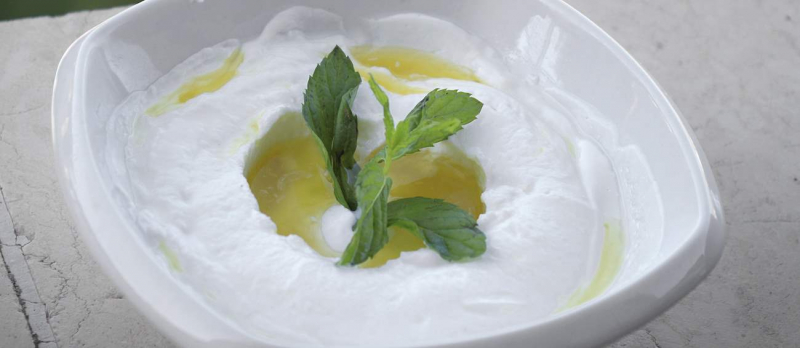
https://www.tasteatlas.com/ 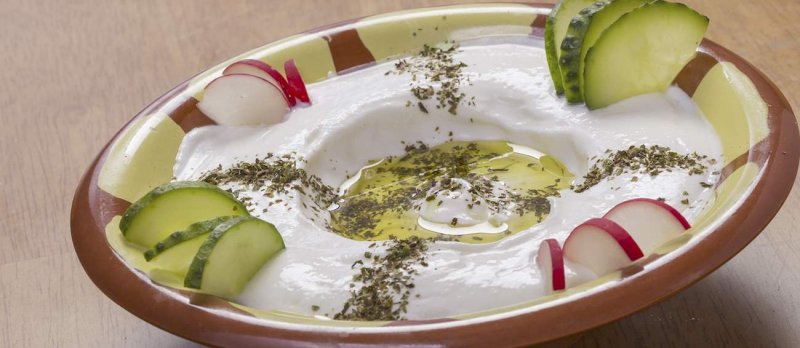
https://www.tasteatlas.com/ -
Despite the fact that these protein-rich chickpea fritters are listed as one of Israel's national dishes, it is often speculated that falafel originated in Egypt, Lebanon, or Palestine. By the 1950s, Yemenite immigrants in Israel began making falafel on the streets and selling it wrapped in paper to make a living, transforming this ancient dish into an early form of Israeli fast food.
Fava beans can be substituted for chickpeas in the Israeli version, and the mixture is typically flavored with parsley, coriander, cumin, and onions. Today, falafel fritters are most commonly served in pita or lafa flatbread sandwiches, topped with fresh or pickled vegetables and dipped in hummus paste, tahini dip, or a zesty, garlic-flavored yogurt sauce.
Lots of travelers highly recommended this dish as one of the Israeli must-try foods.
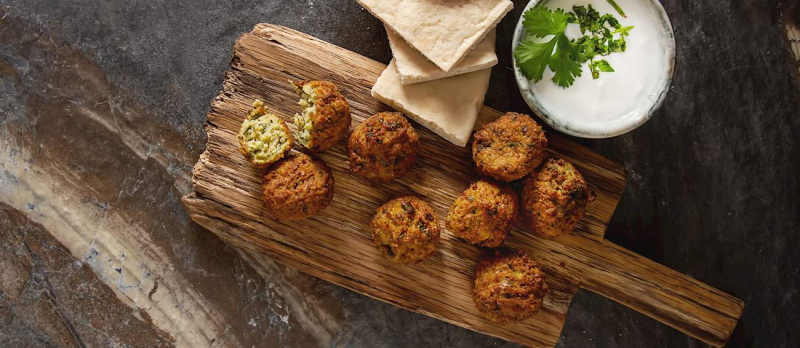
https://www.tasteatlas.com/ 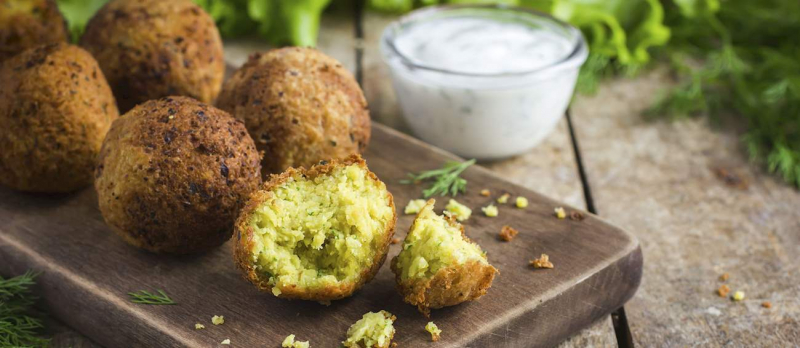
https://www.tasteatlas.com/













